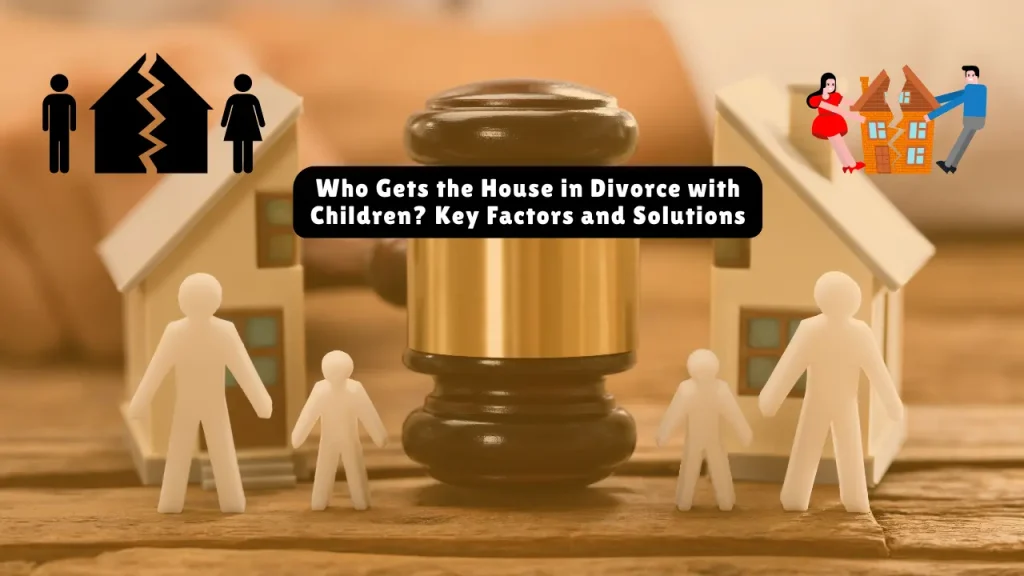Who Gets the House in Divorce with Children? Key Factors and Solutions
Divorce is often complicated by the question of who gets to keep the family home, especially when children are involved. The family home is more than just a piece of real estate—it represents stability, routine, and emotional security for the children. In this combined guide, we explore the crucial factors that determine who gets the house in a divorce with kids.
Table of Contents
1. Custody Arrangement: The Ultimate Decider
The primary factor courts consider is the custody arrangement. Courts in the U.S. place the child’s best interests above all else, and that principle often extends to deciding who stays in the house.
- Primary Custody: The parent who is awarded primary physical custody typically gets to stay in the house, at least temporarily, to minimize disruption for the children. This decision is made with the aim of maintaining stability for the children, allowing them to stay in the same schools and community.
- Joint Custody: In cases of joint physical custody, the house is often sold unless parents implement a “bird nesting” strategy. In this setup, children stay in the family home while parents rotate in and out. This arrangement works best in low-conflict scenarios.
2. Financial Viability: Can You Afford the House?
Even if the custodial parent wishes to stay in the family home, the financial viability of doing so must be considered. Can the parent afford the mortgage, taxes, insurance, and upkeep without the financial support of the other spouse?
- Mortgage Affordability Test: Courts will assess whether the monthly mortgage payment is manageable. Typically, they expect the payment to be no more than 28% of the custodial parent’s post-tax income.
- Hidden Costs: Beyond the mortgage, there are other costs to consider, such as property taxes, insurance, and maintenance. If a parent cannot afford these, it may lead to a court-ordered sale of the property.
3. Equity & Buyout Options
When deciding who gets the house, the equity in the home is a critical consideration.
- Low Equity (<20%): If there is little equity in the house, selling the home and splitting the proceeds (or any remaining debt) may be the most practical option.
- High Equity: If there is substantial equity in the home, the custodial parent may seek to refinance the house to buy out the other spouse’s share. However, this requires careful financial planning and proof of the ability to make the payments.
- Deferred Sale: If neither parent can afford the house, or if a buyout isn’t feasible, the court may opt for a deferred sale. This means the home remains with the custodial parent until the youngest child turns 18, after which the home is sold and proceeds divided.

4. State Law Frameworks
Laws around property division vary by state:
- Community Property States (e.g., California, Texas): In these states, assets acquired during the marriage, including the family home, are split 50/50 unless a buyout is agreed upon.
- Equitable Distribution States (e.g., New York, Florida): Courts in these states aim for a “fair” division, which may not necessarily be equal. Factors such as custody status, income disparity, and the length of the marriage play a significant role.
Related article: How to File for Divorce in Indiana?
5. Temporary vs. Permanent Solutions
While temporary arrangements are often the norm during divorce proceedings, the goal is to find a permanent solution:
- Temporary Orders: In many cases, the custodial parent is allowed to stay in the home temporarily (usually 6–18 months) while the divorce process continues.
- Permanent Awards: A permanent award of the house is rare. It generally requires proof of long-term affordability. Only about 22% of parents keep the house post-divorce. Courts tend to favor solutions that ensure stability without burdening a parent with unmanageable debt.
Strategic Paths to Keeping the Home
If the custodial parent wishes to stay in the home, there are a few options to consider:
- Buyout Refinance: The custodial parent can apply for a solo refinance to buy out the other spouse’s share. This involves getting a house appraisal, calculating equity, and securing a new mortgage to cover the buyout.
- Creative Equity Trades: If a buyout is not possible, parents may use alternative assets (e.g., 401(k) or stock portfolio) to offset the value of the home.
- Deferred Sale: As mentioned earlier, a deferred sale allows the custodial parent to remain in the house with the children until a trigger event (e.g., the youngest child turns 18). After that, the home is sold, and proceeds are divided.
High-Conflict or Unsafe Situations
In cases of domestic violence or high-conflict divorces, the safety of the children and the non-abusive parent is the priority:
- The abusive spouse may be ordered to vacate the home, regardless of ownership.
- Courts may prioritize placing the child with the non-abusive parent, awarding them the home.
- Judges can issue restraining orders, supervised visitation, or limit contact as necessary.
When Letting Go Is Smarter: The Sale Alternative
Selling the house may be the best option in the following scenarios:
- Neither parent can afford the mortgage on their own.
- High conflict between parents prevents cooperation on a solution.
- Equity from the home sale is needed to help both parents start fresh.
In such cases, it’s wise to use a divorce specialist realtor, who can help minimize fees and time spent on selling the property.
Key Takeaways
- Custody arrangement plays a significant role in determining who gets the house.
- Financial reality matters just as much as emotional attachment—both must be factored into decisions.
- Courts typically prioritize stability for the children, so temporary solutions like bird nesting may be an option.
- Creative solutions, such as buyouts or equity trades, can help make keeping the house feasible.
- State laws and temporary vs. permanent decisions also influence outcomes, with each state having different regulations on property division.
Ultimately, while there is no universal rule, courts will always prioritize the best interests of the children, ensuring that their stability and emotional well-being are protected during this difficult transition.
About the Author

Sarah Klein, JD, is a former family law attorney with over a decade of courtroom and mediation experience. She has represented clients in divorce, custody cases, adoption, Alimony, and domestic violence cases across multiple U.S. jurisdictions.
At All About Lawyer, Sarah now uses her deep legal background to create easy-to-understand guides that help families navigate the legal system with clarity and confidence.
Every article is based on her real-world legal experience and reviewed to reflect current laws.
Read more about Sarah
